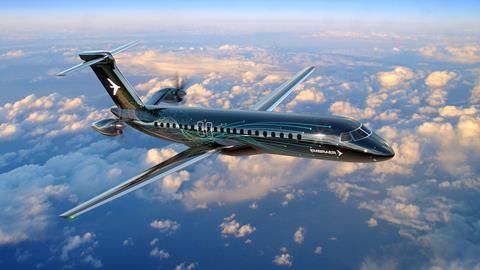Brazilian aircraft manufacturer Embraer has letters of intent for “well above 250” of its planned turboprop aircraft, the company’s commercial aircraft chief executive Arjan Meijer said at the Farnborogh air show today.
Embraer it still to formally launch the programme, but has been considering development of a modern turboprop for several years, a move that could significantly disrupt a market dominated by ATR and De Havilland Canada. Both those airframers’ aircraft are based on decades-old designs.
The manufacturer has said its new turboprop would share a fuselage with its E-Jet regional jets, so that customers will get a familiar feel from the new aircraft. The company is planning two variants, one with 70 and another with 90 seats.

It has not decided yet which of the two versions it would pursue first. In any case, the San Jose dos Campos-headquartered company plans to launch the programme in 2023, with the aircraft to become available from 2028 and 2029.
While Meijer was cagey about naming the parties which have signed the tentative deals, he says that it is a “global spread of customers in almost all continents and ..a very diverse mix of operators”. Network carriers as well as point-to-point operators are among the potential customers.
All of the current interest is from airlines, and none from lessors, he adds.
“We want to see what the user says about it first,” Meijer says. “And at this show we have more customers showing a real interest in the turboprop.”
He adds that the company will be prepared to announce a launch customer in the coming nine to 12 months.
Embraer has said that it sees the 70-seat variant as ideal for the US market, which would likely outfit such an aircraft with only 50 seats, in two classes. They would use it to replace ageing 50-seat regional jets, with the 90-seater likely be more popular in other regions.
It anticipates that in the next twenty years the market for turboprops is 2,280 examples worldwide. Just over 40% of that is in Asia Pacific, with nearly 22% in Europe, 17.5% in North America, 8.8% in Africa, 7.9% in Latin America and 1.8% in Middle East.





























